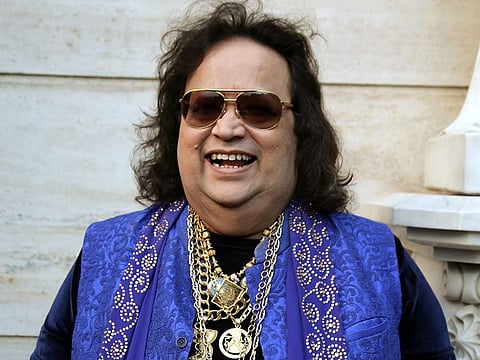Bidding goodbye to Bappi Lahiri, the soundtrack of my childhood
Bappi Lahiri’s death comes as a blow shortly after the death of Lata Mangeshkar

Sandwiched somewhere between the Gen-Xers and the millennials, my analogue childhood was spent on a diet of scratchy VHS tapes in the ‘80s, playing Amitabh Bachchan movies on loop.
The movies or the angry young man roaring on screen barely made an impression on the seven-year-old me, but the songs… oh yes, the soundtracks lit up my childhood much like Cinderella taking her first step into a ball.
Clueless to who Bappi Lahiri was at the time, my love affair with his music was perhaps my first bona fide crush. Watching the glittering Parveen Babi groove to the beats of ‘Jawani Jaan-E-Man’ from ‘Namak Halal’ (1982) had me whip out my mum’s duppata (stole) and tie it around my waist as a fashion declaration of sorts, all while standing in front of our 32-inch Philips television box, desperately trying to master the moves that formed a perfect foil to Lahiri’s composition.
That very year dad came home one evening with the VHS of a Mithun Chakraborty film that had recently released, much to my displeasure. ‘Disco Dancer’, I had yelled. Who wanted this silly movie when I had just discovered a new love for ‘Raat Baaki’?
Yet, hours later, ‘Jimmy Jimmy’ had become the mantra of my life, with ‘Yaad Aa Raha Hai’ coming up as a close second.
It was years later when the magic of Lahiri’s compositions really connected as the works of a musical genius who was grooving to his beats long before disco dandiya was even a thing.
His larger-than-life living reflected in his music, with ‘Pag Ghungroo Baandh’ from ‘Namak Halal’ — undeniably one of his greatest compositions — transforming from a classical composition into a modern-day popular beat, peppered with Jhankar and elevated further by Kishore Kumar’s exceptional voice.
Comparisons to the legendary RD Burman were inevitable, but Lahiri had age and an ear on the ground to adapt effectively to the disco era that was sweeping into Bollywood in the mid-80s. ‘Disco Dancer’, 1984’s ‘Kasam Paida Karne Wale Ki’ (which featured Lahiri crooning with Pakistan’s talented Salma Agha), ‘Thanedaar’ (1990) and ‘Sailaab’ (1990) were proof of his talent and his connect with the masses.
Lahiri also wouldn’t hesitate to step up behind the mic when the situation demanded, giving us gems such as ‘Yaad Aa Raha Hai’ from ‘Disco Dancer’, ‘Yaar Bina’ from ‘Saheb’, ‘Bambai Se Aaya Mera Dost’ from ‘Aap Ki Khatir’ and ‘Tamma Tamma Loge’ from ‘Thanedar’.
What perhaps elevated Lahiri’s singing further was the sheer joy that was often mirrored in his voice, confirming that it wasn’t just the listeners who seemed to be having fun while grooving to ‘Ooh La La’ from ‘The Dirty Picture’.
News of Lahiri’s death is a blow to an already crumbling childhood soundtrack that is still grieving with the loss of the legendary Lata Mangeshkar who died earlier this month after a month-long battle with COVID-19 that led up to multiple organ failure.
As many of us attempt to regain our past with Lahiri’s songs playing on loop today, I can’t wait to see the magic of the Disco King light up the childhood of my babies one day.
Sign up for the Daily Briefing
Get the latest news and updates straight to your inbox


